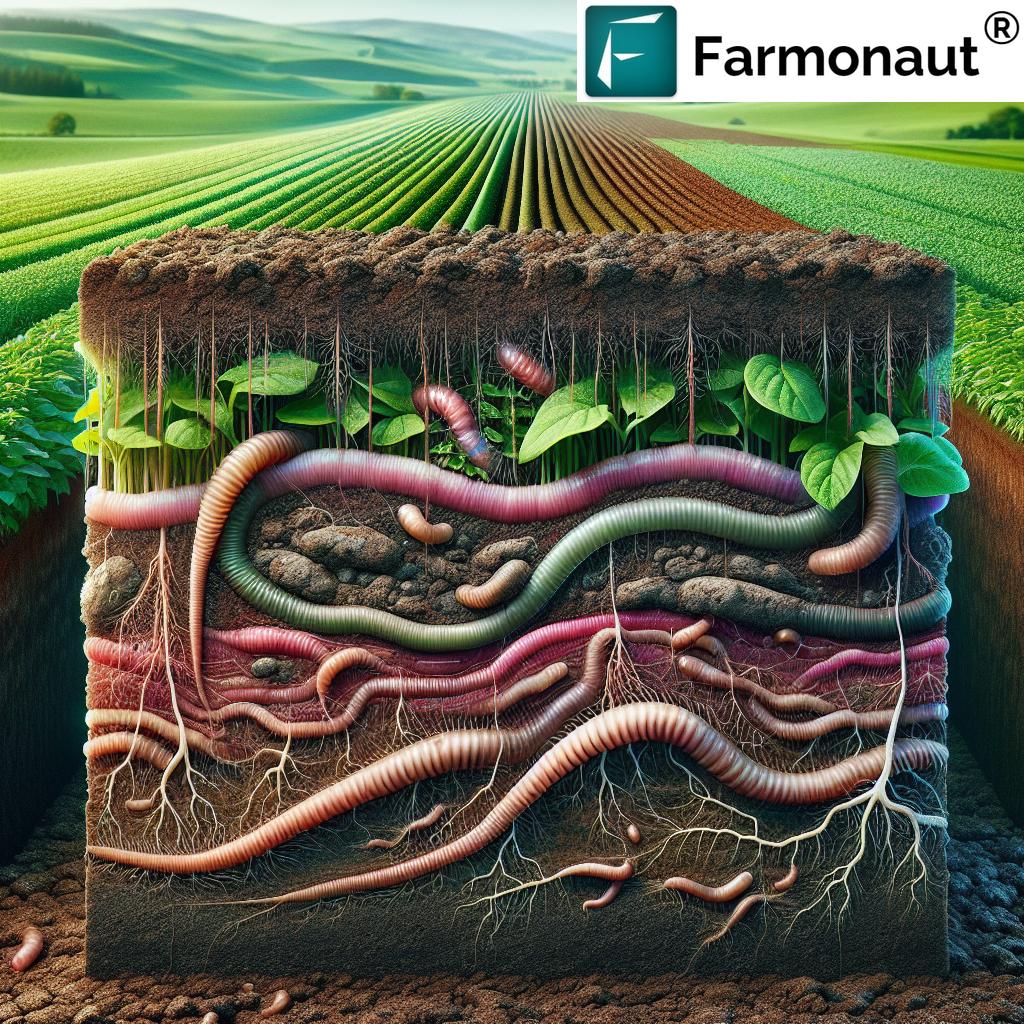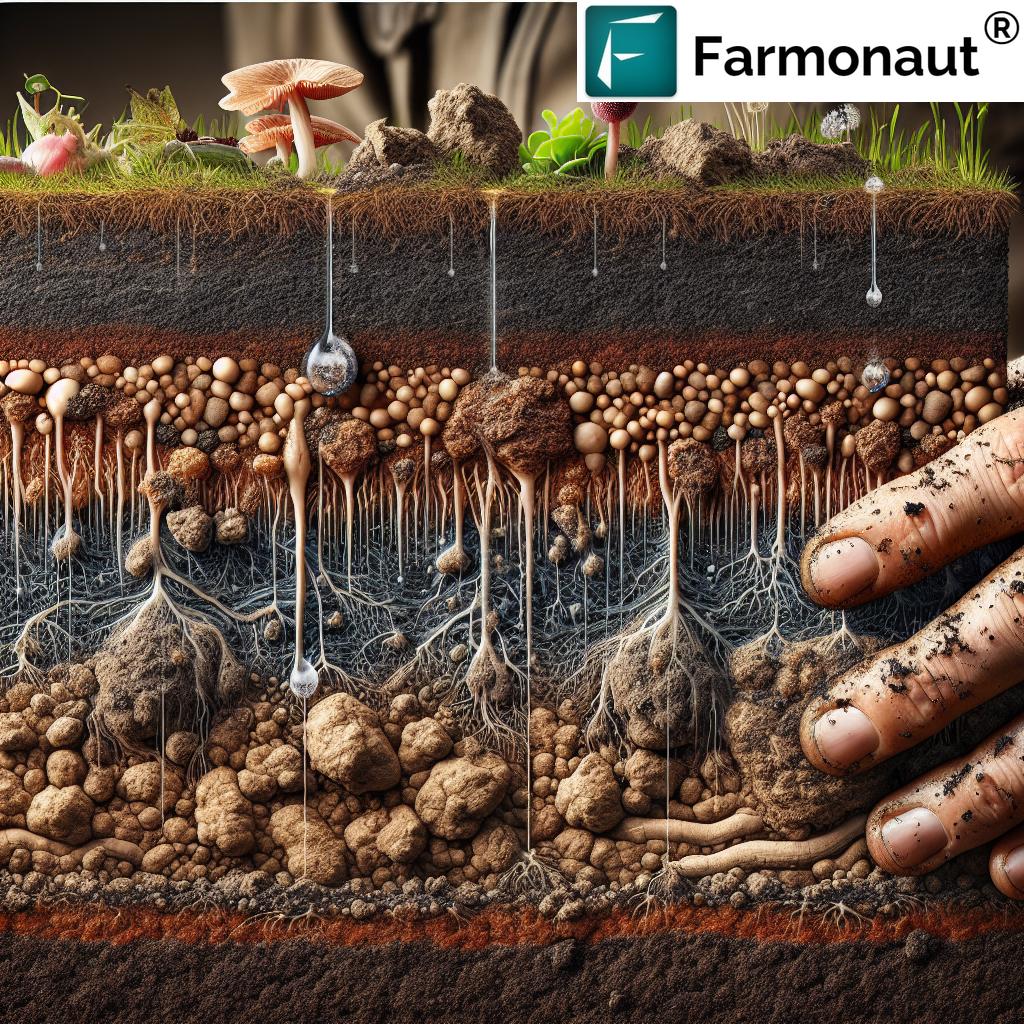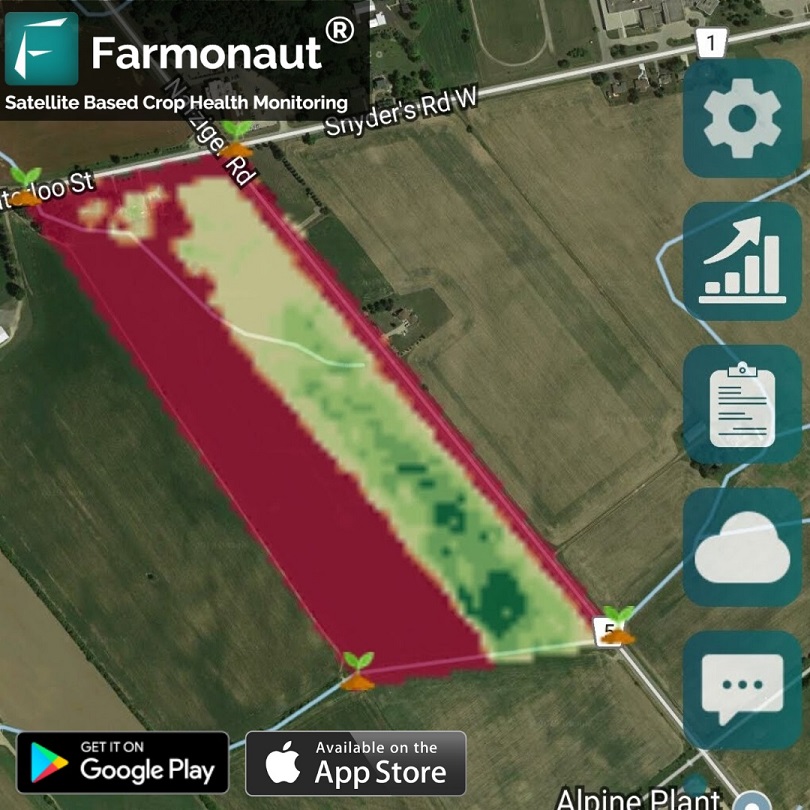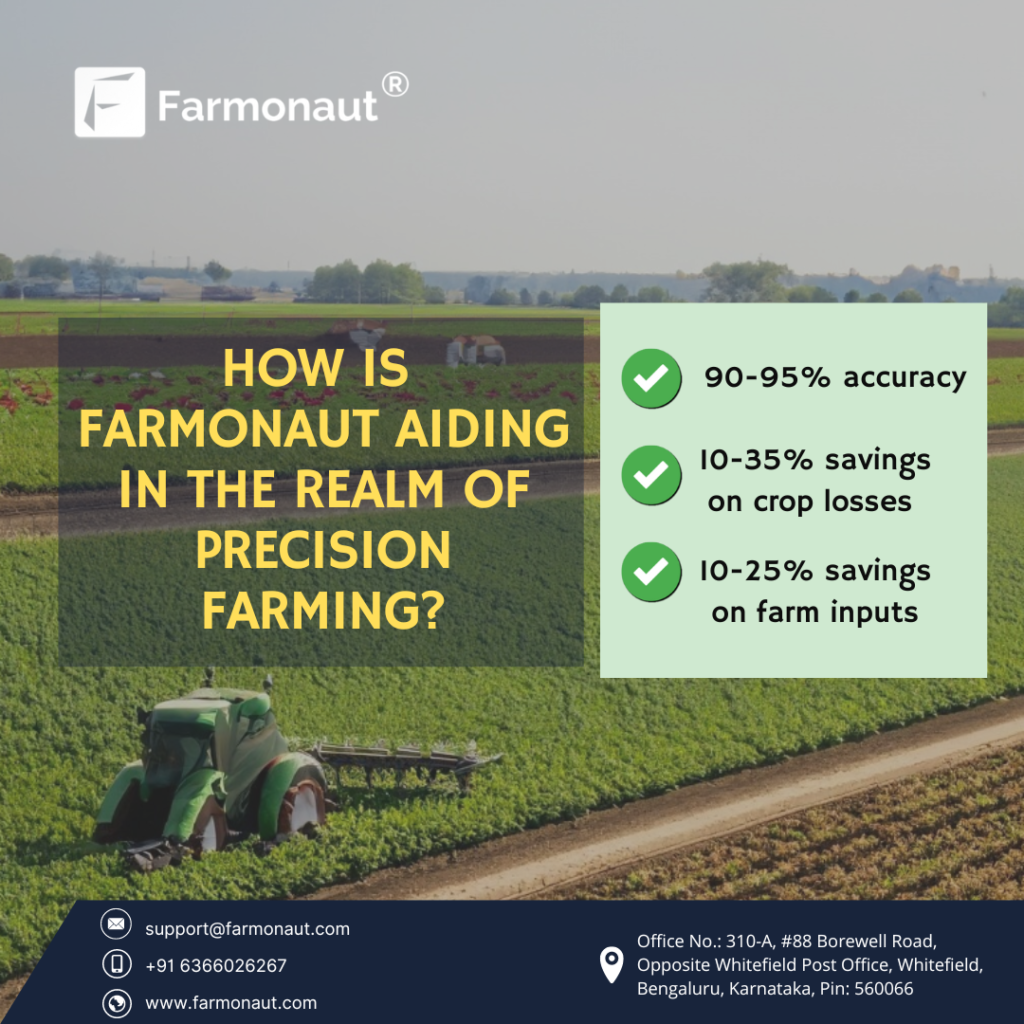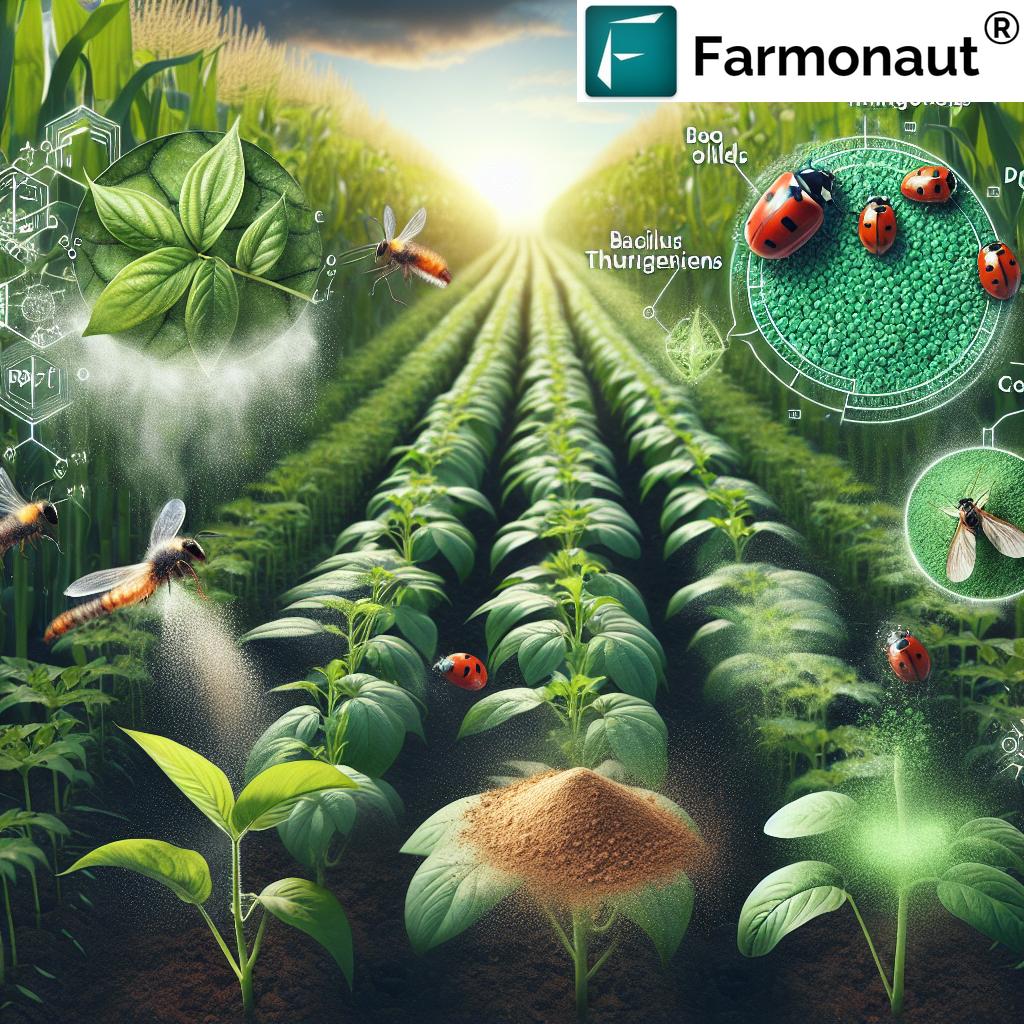Soil Structure Secrets: 7 Powerful Ways to Boost Soil Health
Introduction: The Foundation of Sustainable Agriculture
If we aspire to advance sustainable farming and forestry, there’s one concept that stands above the rest—soil structure. Our soil is more than a medium for crops and roots; it is a dynamic ecosystem, playing a pivotal role in water infiltration, nutrient cycling, and plant growth. By mastering the secrets of soil structure, we unlock solutions to improved productivity, reduced compaction and erosion, and resilient agriculture in the face of climate change.
In this comprehensive guide, we’ll demystify the science behind soil aggregates, investigate the factors shaping them, and unveil seven proven methods for improving soil health. We’ll also turn the lens on innovative technologies—like those developed by Farmonaut—that are revolutionizing soil monitoring and precision agriculture worldwide. Get ready to learn how the right aggregate arrangements, supported by mindful management, can yield long-term soil fertility and sustainability for us all.
Understanding Soil Structure: Components and Formation
To harness the power of soil structure, we must first understand what it is. Soil structure refers to the arrangement of soil particles—sand, silt, clay, and organic matter—into clumps or aggregates, often called “peds.” This complex architecture creates pore spaces that control how water, air, and roots move through the soil layers.
The Key Ingredients: Sand, Silt, Clay, and Organic Matter in Soil
- Sand: Largest soil particles, promotes drainage and reduces compaction.
- Silt: Medium-sized particles, retains some water and nutrients.
- Clay: Smallest particles, holds water and nutrients tightly, but prone to compaction if not managed.
- Organic Matter: Composed of decomposed plant and animal residues, root exudates, and microbial biomass. Acts as a powerful binding agent and food source for soil organisms.
Aggregate formation results from the interplay of these building blocks, combined with biological activity, environmental conditions, and farming practices.
The Science of Aggregate Formation
- Physical Processes: Wetting, drying, freezing, thawing (expansion and contraction) cause soil particles to bind or break apart.
- Biological Processes: Plant roots and soil organisms (like earthworms and fungi) secrete natural glues and physically entangle particles, creating stable soil aggregates.
- Chemical Processes: Clay minerals and dissolved nutrients interact with organic matter to enhance aggregate stability.
The Role of Organic Matter in Soil Structure
Organic matter in soil is the lifeblood of healthy aggregates. It acts as a sticky “cement” binding particles together, boosts water retention, and supports a thriving microbial ecosystem that, in turn, maintains aggregate formation and stability. Regular input of organic residues (like compost, cover crops, or manure) is essential for enhancing soil health.
Types of Soil Aggregates: The Building Blocks
Not all soil aggregates are created equal. Their shape, size, and stability determine how water moves, roots grow, and nutrients are cycled. Let’s explore the major types according to their appearance and effect on soil health:
Unlocking Soil Organic Carbon: The Secret to Sustainable Farming with Farmonaut
- Granular Aggregates: Small, rounded peds found mostly in the topsoil. Benefits: Excellent for water infiltration, root penetration, and microbial activity.
- Blocky Aggregates: Irregular cubes with rounded or flat surfaces, common in the subsoil layers. Benefits/Concerns: Moderate water movement, may offer resistance to root spread if dense.
- Prismatic and Columnar Aggregates: Tall, vertical columns or prisms. Risks: Can hinder water movement and restrict roots if overly compact or poorly developed.
- Platy Aggregates: Thin, plate-like structures, typically parallel to the surface layer. Risks: Restrict water infiltration and root movement; often result from compaction or poor tillage practices.
Among these, granular aggregates are ideal for farming as they optimize soil porosity, water and air movement, and sustainable root growth.
Key Factors Influencing Soil Structure and Health
Our success in maintaining or improving aggregate stability in agriculture depends on a thorough understanding of the forces at work. The following factors are crucial for soil structure:
-
Organic Matter Input
Decomposed plant and animal residues, root exudates, and microbial biomass act as binding agents, promoting aggregate formation and enhancing soil stability.- Improves water retention, nutrient cycling, and overall aggregate stability
- Encourages earthworms and beneficial fungi, which actively bind soil particles together
-
Biological Activity
- Soil organisms (earthworms, fungi, bacteria) contribute to aggregate formation and maintenance
- Root exudates and earthworm casts act as natural glues
-
Tillage Practices
- Excessive tillage can cause degradation of soil structure by breaking up aggregates, increasing compaction and risk of erosion
- Sustainable tillage methods (reduced tillage or no-till) preserve and strengthen stable aggregates
-
Climate Factors
- Temperature and moisture variations trigger physical processes: expansion and contraction, wetting-drying cycles
- Frequent or severe changes may cause disintegration of aggregates
-
Plant Roots & Crop Diversity
- Root penetration and diversity stimulate aggregate formation
- Roots release exudates that bind soil particles and create channels for water and air
The Role of Artificial Intelligence in Agriculture – Farmonaut
Impacts of Soil Structure on Agriculture and Forestry
-
Soil Infiltration and Water Retention:
Good soil structure ensures rapid water infiltration, reducing surface runoff and erosion. Stable aggregates act like sponges, holding water for plant use. -
Root Growth and Soil Fertility:
Well-structured soils make it easier for roots to penetrate deeper layers, absorb nutrients, and interact with beneficial microbial activity. -
Soil Compaction and Erosion:
Poor structure leads to compaction (from over-tillage or heavy machinery), restricting pore space, root and water movement, and making soils susceptible to surface crusting and disintegration under wind or rain. -
Soil Aeration:
Adequate pore spaces ensure a balance of oxygen and moisture, supporting plant health and microbial life. -
Soil Fertility Maintenance:
Aggregates protect organic matter from rapid decomposition or leaching, ensuring nutrient security and improved yields. -
Biodiversity and Ecosystem Stability:
Strong aggregate structure fosters diverse populations of earthworms and other soil organisms, powering the engine of sustainable ecosystems.
Soil Structure Secrets: 7 Powerful Ways to Boost Soil Health
Let’s dive deeper into high-impact practices for improving soil health, aggregate stability, and fertility. By embracing these seven methods, we can create a solid foundation for resilient, productive, and sustainable agriculture and forestry systems.
1. Reduced Tillage or No-Till Farming
- Why it matters: Reducing mechanical disturbance helps preserve existing aggregates, prevents compaction, and stops degradation of soil structure.
-
Benefits:
- Promotes stable granular aggregates
- Increases porosity, water infiltration, and root growth
- Encourages biological life in the surface layer
- Lowers risk of soil erosion and runoff
- Farmonaut Technology: Farmonaut’s satellite-based crop health monitoring can help us verify the impact of large-scale farm management techniques like reduced tillage, measuring soil moisture and crop vitality across fields.
Farmonaut Covered By Radix AI: Leveraging Remote Sensing and Machine Learning for a Greener Future
2. Cover Cropping: The Living Blanket for Soil
- Why it matters: Cover crops prevent bare soil, supply organic matter, and protect against wind and water erosion.
-
Benefits of Cover Cropping:
- Boosts aggregate formation by continuous root exudates and organic inputs
- Reduces compaction and improves soil infiltration and water retention
- Supports beneficial organisms and microbial activity
- Best Choices: Legumes (for nitrogen enrichment), grasses (for deep roots), and diverse mixes for functional synergy.
3. Crop Rotation and Plant Diversity
- Why it matters: Rotating crops disrupts pest cycles, improves soil structure by diversifying root types, and encourages a balanced soil ecosystem.
-
Benefits:
- Varied root exudates fuel different microbial communities, increasing soil aggregation
- Reduces compaction from repetitive monocultures
- Improves overall nutrient balance and resilience to stressors
4. Regular Addition of Organic Amendments
- Why it matters: Applying compost, manure, or crop residues replenishes organic matter in soil and supports ongoing aggregate stability.
-
Benefits:
- Acts as a long-term food source for soil organisms
- Improves pore structure, water retention, and soil fertility
- Buffers against pH changes and nutrient loss
- Traceability: Learn how Farmonaut’s blockchain-based product traceability builds agro supply chain trust with reliable data on crop origin and soil management history.
5. Controlled Traffic Farming (CTF)
- Why it matters: Driving heavy equipment repeatedly over the entire field causes soil compaction and erosion.
- Practice: Restrict all machinery movement to specific, permanent lanes (“tramlines”) to protect most of the soil surface.
-
Benefits:
- Preserves aggregate stability in agriculture
- Prevents deep compaction of root zones, enabling deeper root penetration
- Improves water movement and infiltration
- Farmonaut Fleet Resource: Monitor and optimize your vehicle usage using Farmonaut’s fleet management platform to reduce unnecessary field traffic and machinery costs.
Farmonaut | Making Farming Better With Satellite Data
6. Enhancing Biological Activity (Earthworms & Microbes)
- Why it matters: Earthworms, fungi, and beneficial bacteria are natural aggregate builders.
-
Strategies:
- Limit use of harsh chemicals that harm biological activity
- Encourage diverse plant roots and maintain moisture for soil organisms
- Add quality organic matter (compost, manure, cover crops)
- Result: More stable soil aggregates, better nutrient cycling, rapid decomposition of residues, and less risk of compaction or disintegration from wind/water.
7. Climate-Smart Management (Carbon Sequestration & Adapting to Change)
- Why it matters: Proactively adjusting management practices for local temperature, rainfall, and extreme weather events minimizes soil disturbance and keeps aggregates stable.
-
Practices:
- Timely cover cropping to protect against seasonal wind or water erosion
- No-till or reduced tillage adapted to local climate cycles
- Carbon footprinting to track progress toward climate-oriented goals
- Farmonaut Carbon Tool: Explore Farmonaut’s carbon footprinting feature for real-time insights on emissions tracking and sustainable improvements.
Comparative Impact Table: 7 Methods for Improving Soil Structure and Health
| Method/Practice | Estimated Water Infiltration Improvement (%) | Effect on Root Growth | Estimated Organic Matter Increase (1 yr, %) | Impact on Sustainable Farming | Additional Benefits |
|---|---|---|---|---|---|
| Reduced Tillage | 15–35% | High | 0.2–0.6% | Strong | Reduces compaction and runoff, conserves moisture |
| Cover Cropping | 20–40% | High | 0.3–0.8% | Strong | Improved fertility, erosion prevention |
| Crop Rotation | 10–25% | Medium–High | 0.2–0.4% | Strong | Enhanced biodiversity, breaks pest cycles |
| Organic Amendments | 12–30% | High | 0.5–1.5% | Strong | Boosts nutrient supply, supports soil fauna |
| Controlled Traffic | 8–18% | Medium–High | 0.1–0.3% | Moderate | Reduces compaction, operational savings |
| Enhancing Biological Activity | 10–22% | High | 0.4–1.0% | Strong | Improves aggregation, decomposes residues quickly |
| Climate-Smart Management | 12–28% | Medium–High | 0.2–0.6% | Strong | Mitigates climate risks, improves sustainability |
Precision Agriculture and Farmonaut: Transforming Soil Health Management
In our journey to boost soil health, knowledge is power. But how do we gain real-time, field-level insights to guide these sustainable choices and monitor soil structure improvement at scale?
Farmonaut: Your Satellite-Powered Soil and Farm Health Assistant
- Real-Time Crop & Soil Monitoring: Farmonaut uses satellite imagery and AI to deliver daily/weekly insights on vegetation health (NDVI), soil moisture, disease risk, and more.
- Personalized Advisory (Jeevn AI): Farmonaut’s AI-based farm advisory gives customized, real-time recommendations—on irrigation, fertilizer, or sustainable practices—by analyzing your field’s data and local weather trends.
- Blockchain Traceability: Trace your products securely from soil to shelf, boosting consumer trust and premium pricing potential.
-
Resource Management: Farmonaut’s tools for
fleet management and carbon footprint tracking
enable sustainable, cost-effective operations. - Accessible Anywhere: Use the Farmonaut web, Android, and iOS apps for easy, affordable access wherever your farm is—no expensive monitoring hardware required.
- API Integration: Developers and businesses can leverage Farmonaut’s rich data by accessing the satellite & weather API (API Docs) to build advanced analysis and apps.
Farmonaut Empowers
- Individual Farmers: Affordable, actionable advice for maximizing soil, water, and crop productivity.
- Agribusinesses: Efficient management of plantations and resource tracking, including crop, fleet, and carbon.
- Government & NGOs: Tools for large-scale monitoring, satellite-based verification for crop loans/insurance, and data-driven policy planning.
- Enterprises: Blockchain traceability and supply chain integrity for food and textile brands.
Frequently Asked Questions (FAQ)
Q1: What is soil structure, and why does it matter for agriculture?
A: Soil structure refers to the arrangement of soil particles (sand, silt, clay, organic matter) into aggregates or clumps. It determines water infiltration, root penetration, aeration, and nutrient cycling, which are critical for soil health, crop yields, and sustainable farming.
Q2: How can I quickly assess my field’s soil structure?
A: Look for evidence of granular aggregation in the topsoil, ease of root penetration when digging, and absence of platy (layered, compacted) zones. Use satellite tools like Farmonaut to monitor crop and soil health remotely and regularly.
Q3: Why are cover crops important for soil health?
A: Cover crops supply organic matter, protect soil from wind/water erosion, improve water infiltration and support beneficial biological activity—all essential for strong aggregate stability.
Q4: What is the main cause of soil compaction and how can I prevent it?
A: Heavy machinery, over-tillage, and working wet soils cause compaction. Prevent it by practicing controlled traffic farming, minimizing unnecessary field passes, and adopting reduced or no-till systems.
Q5: What is aggregate stability, and how do I improve it?
A: Aggregate stability measures how well soil aggregates resist breakdown under wind or water. Improve it by adding organic amendments, growing cover crops, reducing tillage, and supporting soil biodiversity.
Q6: How can Farmonaut help in soil health management?
A: Farmonaut provides satellite-powered tools and AI-based advisories for crop and soil health monitoring, carbon footprinting, and resource/project management. These technologies help track soil moisture, aggregate-improving practices, and overall field vitality—enabling precision, sustainability, and better returns.
Conclusion: Cultivating a Sustainable Future through Soil Structure Management
Soil structure is the heart of healthy, productive bio-systems. By prioritizing strong aggregate formation, nurturing organic matter in soil, and leveraging biological allies, we place ourselves at the forefront of sustainable farming and forestry. The seven practical, science-driven strategies described here—backed by cutting-edge solutions like those from Farmonaut—offer a roadmap for boosting soil health, increasing resilience, and moving toward a regenerative agricultural future.
Let’s commit to smart, evidence-based management. Monitor your field’s progress with real-time data, adapt your practices for the best results, and remember: healthy soil today is an investment in the prosperity of future generations.
Discover more about precision agriculture, soil structure monitoring, and farm management with Farmonaut. Use technology to create a sustainable legacy for your land!


